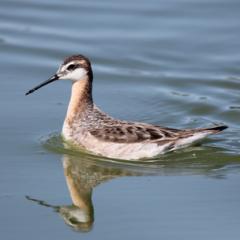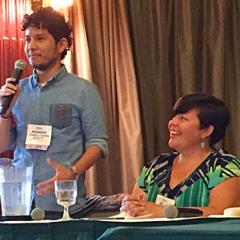About Margaret's Work
Margaret's research integrates experimental approaches to basic scientific questions with the conservation of wild birds. She currently focuses most closely on feeding in birds, with interests in the details of what they eat, why and how they eat it, and how that affects their ability to respond to environmental change by switching to other foods. Her early field research included population studies on endangered Roseate Terns, and work in the Antarctic that led to the documentation of indirect oil spill effects on seabirds. Her dissertation work integrated field and laboratory studies to answer basic questions about the evolutionary causes and ecological consequences of variation in foraging performance among red-necked phalaropes, unusually aquatic shorebirds, at Mono Lake, California. Her work documenting the ecological and digestive limitations on the ability of the birds to respond to the effects of large-scale water diversions contributed to an historical settlement of long-running litigation over water diversions there. Work at this saline lake stimulated her interest in the effects of widespread wetland and water salinization on bird populations. This interest led to postdoctoral studies addressing the development of salt tolerance, feeding mechanics, and excretory organs in juvenile shorebirds, all of which have implications for the conservation of aquatic birds in wetland systems salinized by water diversions and agricultural runoff. Along with other recent studies to examine how birds respond to environmental changes, Dr. Rubega\'s lab group has recently been studying how birds may themselves foster environmental change. This work is focused on how the feeding systems of some birds allow them to become invasive, and on the ways in which native and invasive birds function as seed dispersers for invasive plants.




